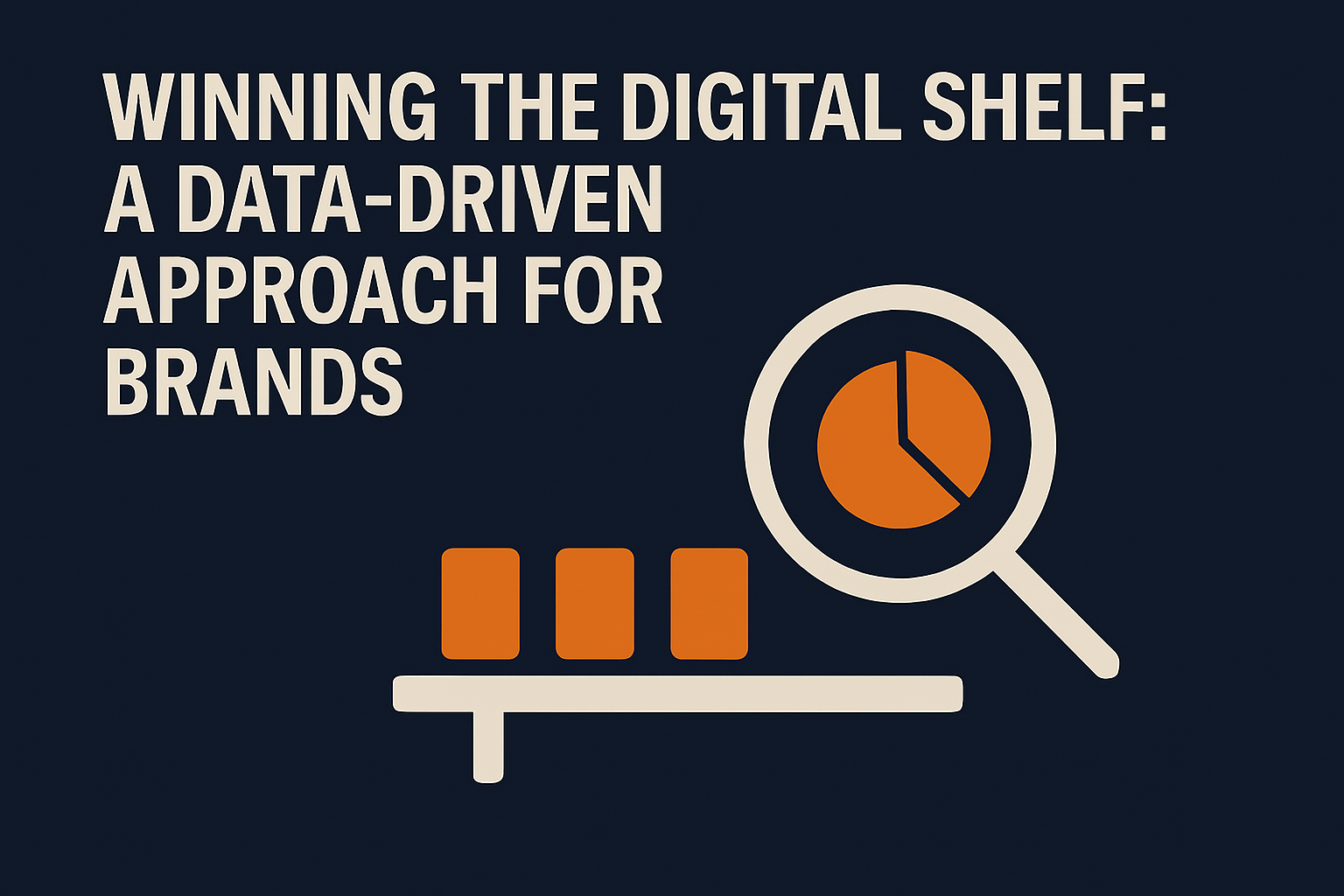In the hypercompetitive world of Indian e-commerce, simply listing a product online is not enough. Brands must strategically optimize their digital shelf presence across marketplaces like Amazon India, Flipkart, Nykaa, Blinkit, and JioMart to drive visibility, conversions, and sales.
A data-driven approach to digital shelf management (DSM) enables brands to track search rankings, optimize content, improve stock availability, and monitor competitors in real-time. Leading brands like Godrej, Wipro, and MARS leverage AI-driven analytics to dominate search results and drive better customer engagement.

Key Highlights:
1️. The Power of Search Rankings & Discoverability
In Indian e-commerce, most purchases start with a search query. Optimizing for high-volume keywords, product titles, and descriptions ensures that brands appear at the top of search results.
Example: Pedigree vs. Drool – Pedigree strategically incorporates the most relevant keywords in product titles and descriptions, ensuring its products rank higher than competitors on Amazon India & quick commerce.
2️. AI-Driven Content Optimization for Higher Conversions
High-performing product pages include SEO-optimized content, high-resolution images, videos, and enhanced A+ content to increase engagement and conversions.
Example: Philips Product Pages – The brand uses data-driven insights to fine-tune product descriptions, highlight key ingredients, and Amazon premium content for improving CTR (Click-Through Rate) and sales.
3️. Real-Time Stock & Inventory Management
Stockouts kill sales. Brands must ensure consistent availability across fulfillment centers to avoid losing rankings. AI-powered demand forecasting helps optimize inventory.
Example: Dettol’s Demand Surge Management – During peak sales periods like Big Billion Days, Dettol prevents stockouts by monitoring demand patterns and reallocating inventory basis data.
4️. Competitive Benchmarking for Shelf Positioning
Monitoring competitor pricing, promotions, and ad placements helps brands adjust their strategy for maximum visibility.
Example: boAt vs. JBL (Audio Category) – boAt continuously tracks JBL’s discounting strategy on Amazon and adjusts its pricing dynamically to stay ahead in the best-selling list.
Conclusion
Winning the digital shelf requires constant monitoring, AI-driven insights, and real-time optimizations. By focusing on search rankings, content enhancements, inventory optimization, and competitor analysis, brands can ensure sustained growth and higher profitability across India’s booming e-commerce landscape.

